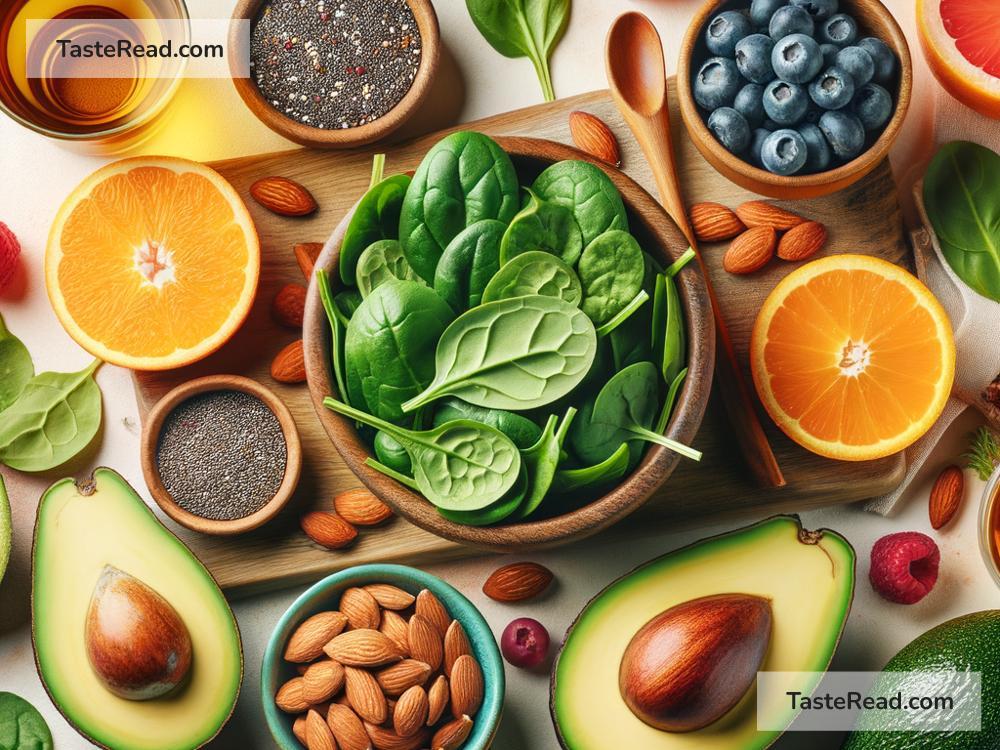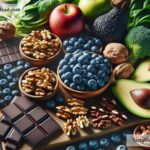Foods for Enhancing Menstrual Health: A Simple Guide
Menstruation is a natural process that many women experience monthly. For some, it’s a breeze, but for others, it comes with challenges like cramps, fatigue, bloating, and mood swings. While these symptoms vary from person to person, one thing is universal: the food you eat can play a big role in easing discomfort and supporting menstrual health.
In this article, we’ll explore simple, wholesome foods that can make your period better. Eating the right nutrients may help balance hormones, improve energy, and reduce common menstrual symptoms.
Why Food Matters During Your Period
Your body goes through many changes during your menstrual cycle, from hormonal fluctuations to physical symptoms like cramping and bloating. These changes can affect how you feel, so it’s important to fuel your body with the nutrients it needs.
Some nutrients, like iron and magnesium, are especially crucial during your period because your body loses iron through menstrual blood. Other nutrients, like omega-3 fatty acids, can help reduce inflammation and support overall health. Let’s dive into the best foods and nutrients for menstrual health.
Foods to Help with Menstrual Health
1. Leafy Greens
Leafy greens such as spinach, kale, and Swiss chard are packed with iron, magnesium, and calcium. Iron is vital for replacing the blood lost during menstruation, and magnesium can reduce cramps by relaxing your muscles. Calcium is also helpful in relieving PMS (premenstrual syndrome) symptoms like mood swings and bloating.
Try adding leafy greens to soups, salads, or smoothies for an easy way to get these nutrients.
2. Fruits
Fruits are rich in vitamins, antioxidants, and natural sugars that offer energy and fight fatigue. Bananas, for example, contain potassium and vitamin B6, which reduce bloating and boost your mood. Oranges and berries are loaded with vitamin C, which helps iron absorption and bolsters your immune system.
Enjoy fruits as snacks, in yogurt bowls, or blended into smoothies for a refreshing treat.
3. Whole Grains
Whole grains like oats, quinoa, and brown rice are high in fiber and complex carbohydrates. Fiber helps regulate digestion, which can be sluggish during menstruation. Complex carbs provide steady energy and support blood sugar levels, reducing mood swings.
Swap refined grains like white bread for whole-grain options to keep your body fueled.
4. Nuts and Seeds
Nuts and seeds like almonds, walnuts, chia seeds, and flaxseeds are nutrient powerhouses. They are high in omega-3 fatty acids, magnesium, and vitamin E. Omega-3s can reduce inflammation and help with menstrual cramps, while vitamin E supports skin health, which can be useful if you notice hormonal acne.
Try sprinkling nuts and seeds onto your oatmeal, yogurt, or salads for a crunch of nutrition.
5. Fatty Fish
Fatty fish like salmon, mackerel, and tuna are rich in omega-3 fatty acids and vitamin D. Omega-3s help lower inflammation, reducing aches and cramping. Vitamin D can improve your mood and is shown to help with PMS symptoms.
If you don’t eat fish, you can get similar benefits from plant-based omega-3 sources such as walnuts or chia seeds.
6. Dark Chocolate
Yes, chocolate can be good for your period! Dark chocolate (70% cocoa or higher) is rich in magnesium, which eases muscle cramps and boosts mood. It also contains antioxidants that can fight inflammation.
Remember to enjoy dark chocolate in moderation, as it still contains sugar.
7. Legumes
Legumes like lentils, chickpeas, and beans are excellent sources of iron, protein, and fiber. Iron helps replenish lost red blood cells during menstruation, while protein keeps you feeling full and energized. Fiber aids digestion and prevents bloating.
Include legumes in soups, stews, or salads for a filling, healthy meal.
8. Herbal Teas
Certain herbal teas can soothe menstrual symptoms. Chamomile tea has calming properties that reduce anxiety and relax muscles, while ginger tea helps with nausea and bloating. Peppermint tea can ease cramps and headaches, making it a comforting choice during tough days.
Sip on tea throughout your cycle for hydration and relief.
What to Avoid During Your Period
While some foods can help, others might worsen menstrual symptoms. Here’s what to limit or avoid:
- Salty Foods: Too much salt can cause bloating and water retention.
- Sugary Snack Foods: Foods high in sugar can lead to energy spikes and crashes that worsen mood swings.
- Caffeine: Too much caffeine can increase anxiety and make cramps worse.
- Processed Foods: Chips, pre-packaged meals, and fast food are often high in unhealthy fats and additives that may trigger bloating.
Final Thoughts
Taking care of your menstrual health is about listening to your body and giving it the nutrients it needs. While no single food will eliminate all period discomforts, eating a balanced diet with plenty of fruits, vegetables, whole grains, proteins, and healthy fats can make a big difference.
Remember that every woman’s body is different, so it may take time to find which foods work best for you. Keep experimenting with healthy, nourishing options and over time, you’ll understand what supports your body.
Next time your period arrives, reach for these nutritious foods to feel stronger and more comfortable. Taking care of yourself during menstruation is an act of self-love—because your health matters!
Do you have any go-to foods or remedies for managing periods? Share your tips and favorites in the comments below!


